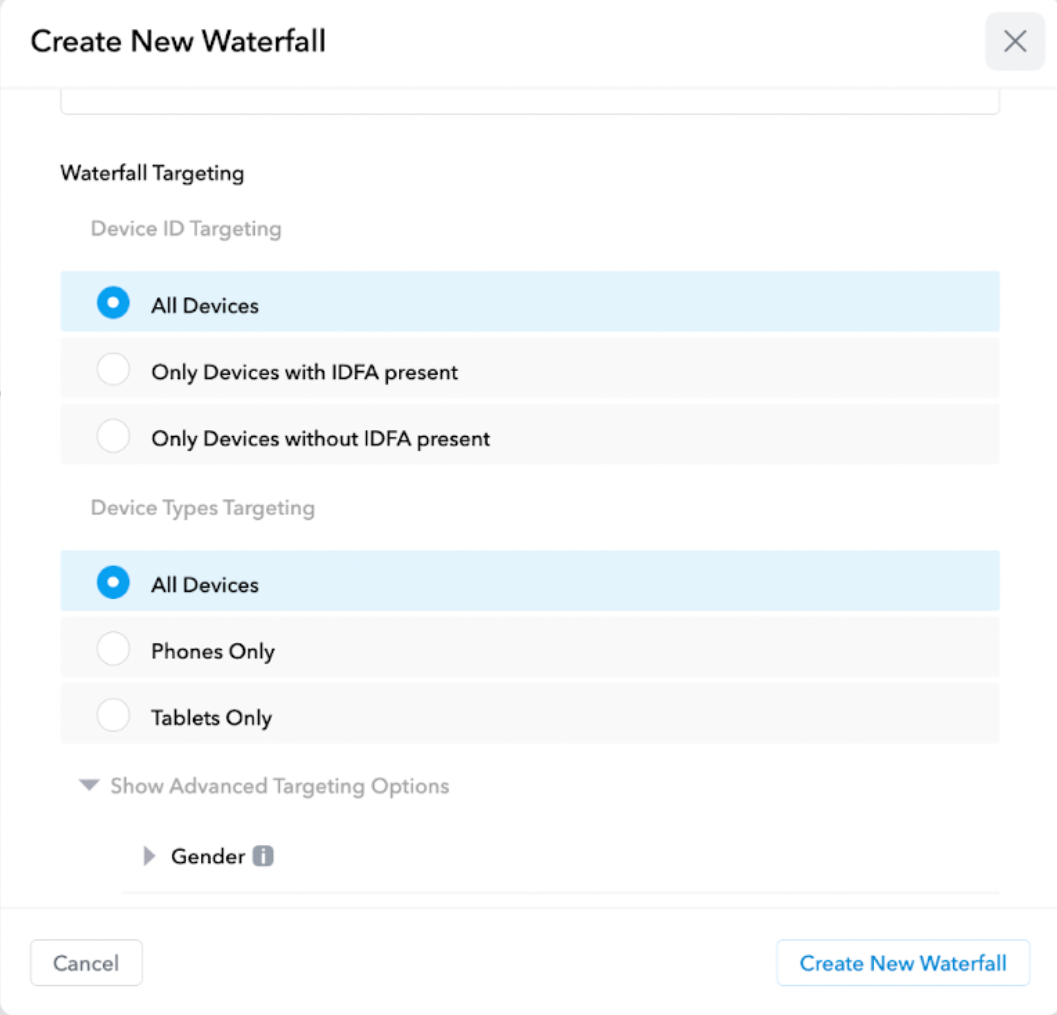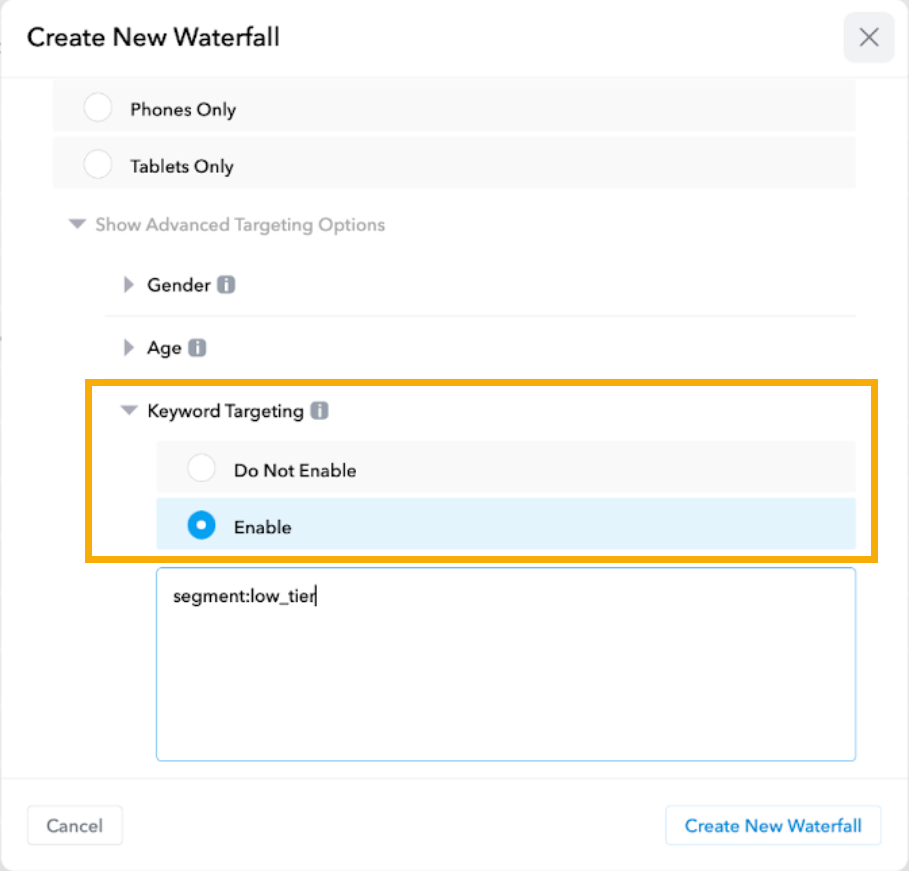AppLovin
Browse all resources
Browse by type
Browse by product
No two users are the same and publishers know that delivering the right ad to the right audience at the right time is crucial in driving strong engagement and maximizing revenue. And now, we’ve recently added new features to MAX that give you even greater control over your monetization to and more effectively target your ads: Waterfall Segmentation and Advanced Targeting.
Waterfall segmentation and advanced targeting are easy ways to serve ads to a segment of users at a certain price based on their value. In addition, our User Level Revenue Reporting API can be piped into your favorite business intelligence (BI) platform or mobile measurement partner (MMP) to help you identify these users.
With MAX’s custom waterfall creation feature, publishers could create specific waterfalls targeting users with IDFA vs LAT and optimize their waterfalls with appropriate price points that will increase fill, higher imp/dau and higher revenue.
With AppLovin 11.0 SDK, we have made additional parameters available for targeting provided by us such as device type, or any optional parameters passed by the developer such as age and gender. This level of segmentation can be accessed directly from the UI and covers most of the common use cases for publishers looking to optimize.

Publishers with more sophisticated needs (like optimizing for high value users, for example) can use MAX’s flexible custom keywords functionality for enhanced targeting and maximize revenue for each user group with a unique waterfall.
In apps where IAP-based monetization is the core focus, publishers try to find a balance between the number of rewarded video ads shown and the spend level for each user. If you have high spenders in your apps, you do not want to show these users an unlimited amount of rewarded video ads as they progress in the app.
While some developers use frequency caps by session or limit the ad exposure within the game play, some developers may only want their high value users to see ads over a specific price point as they are likely to spend more than the ad revenue they might bring.
A good practice is segmenting users into value-based groups and then passing those groups as custom keywords back to MAX (e.g high, medium, low). From there, you can expose them to different price point groups for each network, use in-app bidders to maximize competition and drive higher ARPDAU.
TIP
In non-gaming apps where each section or engagement level might be different based on the user’s time spent in the app, a similar grouping strategy can be used to control the user experience with price floors, waterfall pricing adjustments, and frequency caps.
Keywords allow you to target a group and set price floors that are inline with the average CPM you’re seeing for those users. This will invoke a shorter or sometimes more relevant priced waterfall for each group that will align with the user value.

Using segmentation to target low-end users and devices
Outside of yield management, developers leverage user segmentation to improve the technical health and user experience.
In apps where organic installs are key to the monetization strategy or in non-gaming apps where retained users are critical to the app’s revenue goals, implementing multiple SDKs in regions with low end devices might be problematic.
Low end devices are more susceptible to crashes, unresponsive apps (ANRs), and lockups with animated and resource-heavy creatives. While we recommend you reduce the amount of SDKs showing ads or the frequency of ads shown to the developers, another strategy would be to match the user quality with the monetization strategy. You can use custom keywords to group users into segments and create a new waterfall against that.
Additionally, if you only want to initialize a subset of networks that have proven to perform in these cases, we recommend using a separate ad unit ID for those user groups and use selective initialization logic to ease the load on these devices. This feature ensures that only the ad unit IDs and the networks enabled on these ad unit IDs are going to be enabled and initialized with MAX.
As always, make sure to A/B test any new pricing or partners to measure the impact of changes before pushing it live to your entire user base.
Stay tuned for more developer tips and tricks — and if you have any questions, please contact your account team or submit a ticket to our developer support team.